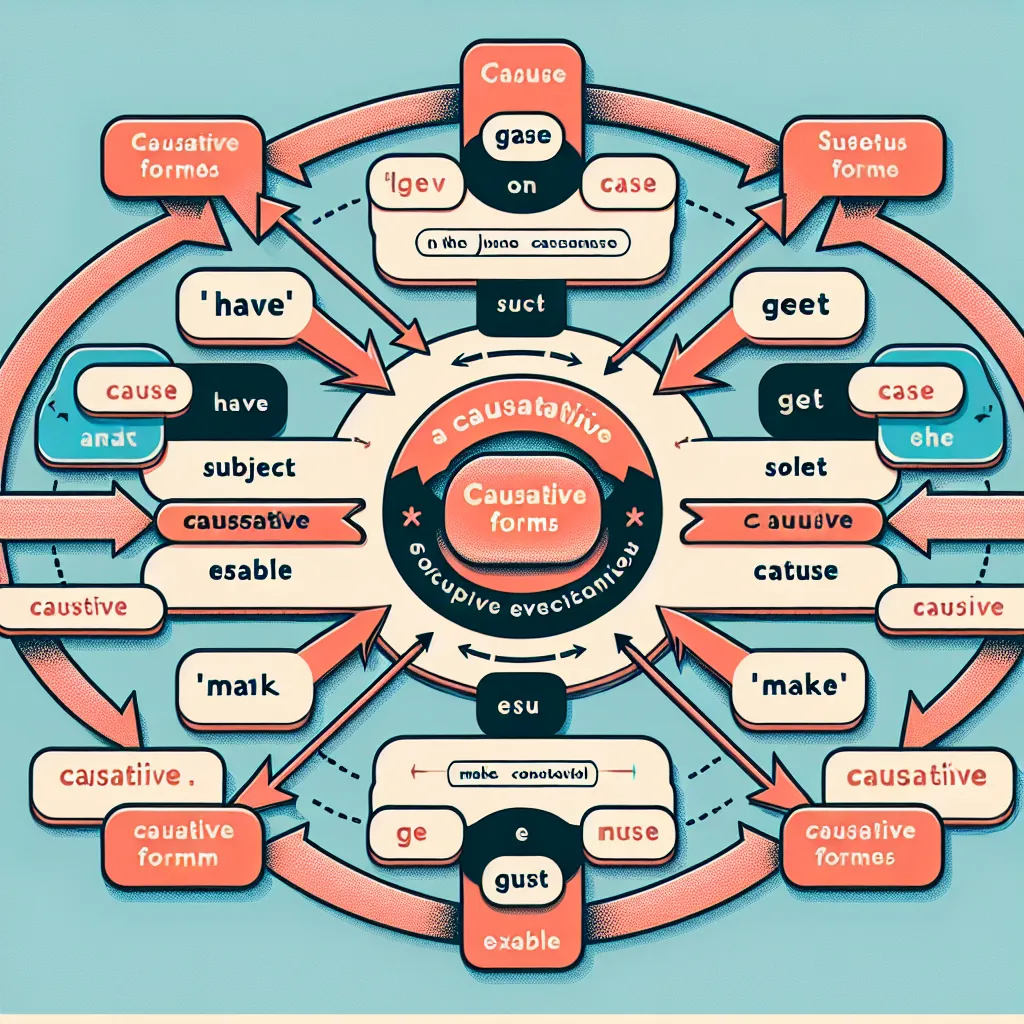Are you struggling with causative forms in English? You’re not alone. Many learners find this aspect of grammar challenging, but mastering it can significantly enhance your language skills. In this guide, we’ll explore effective strategies for Perfecting The Use Of Causative Forms, providing you with clear explanations, practical examples, and useful tips to boost your understanding and application of this important grammatical structure.
Understanding Causative Forms
Causative forms are used to express that someone or something is causing an action to happen. They indicate that the subject is not performing the action themselves but is causing someone else to do it. This concept is crucial in English as it allows us to express complex relationships between actions and their initiators.
 Causative Forms Diagram
Causative Forms Diagram
Why Are Causative Forms Important?
- Express indirect actions: Causatives help you describe situations where you’re not directly performing an action but causing it to happen.
- Convey responsibility: They allow you to indicate who is responsible for an action, even if they’re not the one doing it.
- Add sophistication to your language: Using causatives correctly demonstrates a higher level of English proficiency.
Types of Causative Forms
There are three main causative verbs in English: have, get, and make. Each has its own structure and nuances of meaning.
1. Have Causative
Structure: Subject + have + object + past participle
Example: “I had my car repaired yesterday.”
The ‘have’ causative often implies that you arranged for someone else to do something, usually in a professional context.
2. Get Causative
Structure: Subject + get + object + past participle
Example: “She got her hair cut at the new salon.”
The ‘get’ causative is more informal and can suggest that you persuaded or encouraged someone to do something.
3. Make Causative
Structure: Subject + make + object + base form of verb
Example: “The teacher made the students clean the classroom.”
The ‘make’ causative often implies forcing or strongly persuading someone to do something.
Common Mistakes and How to Avoid Them
-
Incorrect verb form: Remember to use the past participle with ‘have’ and ‘get’, and the base form with ‘make’.
Incorrect: “I had my car repair.”
Correct: “I had my car repaired.” -
Confusing ‘make’ and ‘have’: ‘Make’ is used for forcing, while ‘have’ is for arranging.
Incorrect: “I made my house painted.”
Correct: “I had my house painted.” -
Overusing causatives: Not every action needs a causative form. Use them when emphasizing who caused the action.
Practical Exercises to Perfect Causative Forms
-
Gap-fill exercises: Complete sentences with the correct causative form.
Example: “She ____ (get) her dress altered for the wedding.” -
Transformation drills: Change active sentences into causative forms.
Example: “The mechanic is fixing my car.” → “I am having my car fixed.” -
Role-play scenarios: Create situations where causatives would be naturally used.
Example: Imagine you’re describing home renovations to a friend.
 Causative Forms Practice
Causative Forms Practice
Advanced Tips for Mastering Causatives
-
Pay attention to context: The choice between ‘have’, ‘get’, and ‘make’ often depends on the situation and the relationship between the subject and the person performing the action.
-
Practice with real-life situations: Think about times when you’ve had services done or asked someone to do something for you. How would you express these using causatives?
-
Use causatives in your writing: Incorporate causative forms in your essays or reports to demonstrate a higher level of language proficiency.
-
Listen for causatives in native speech: Pay attention to how native speakers use these forms in movies, podcasts, or conversations.
Conclusion
Perfecting the use of causative forms takes time and practice, but it’s a valuable skill that will enhance your English proficiency. By understanding the different types of causatives, avoiding common mistakes, and engaging in regular practice, you can master this important aspect of English grammar. Remember, the key to improvement is consistent application in your everyday language use. Keep practicing, and you’ll soon find yourself using causatives with confidence and ease.




